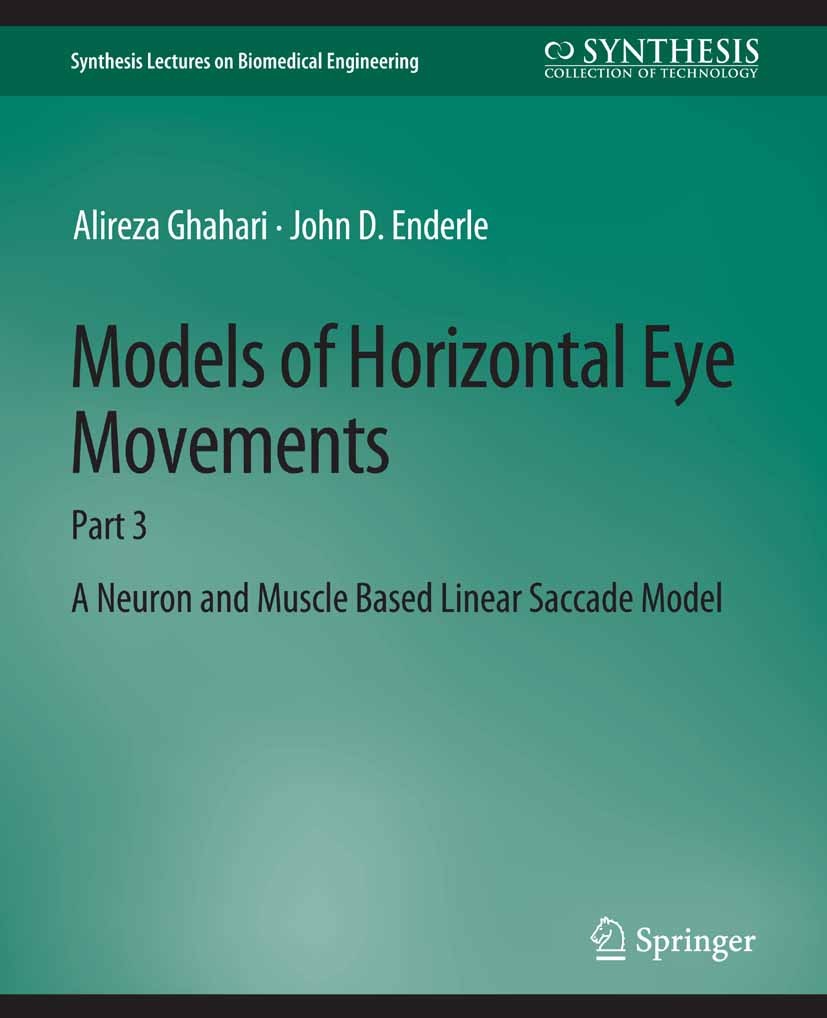| 书目名称 | Models of Horizontal Eye Movements | | 副标题 | Part 3, A Neuron and | | 编辑 | Alireza Ghahari,John D. Enderle | | 视频video | http://file.papertrans.cn/637/636816/636816.mp4 | | 丛书名称 | Synthesis Lectures on Biomedical Engineering | | 图书封面 |  | | 描述 | There are five different types of eye movements: saccades, smooth pursuit, vestibular ocular eye movements, optokinetic eye movements, and vergence eye movements. The purpose of this book series is focused primarily on mathematical models of the horizontal saccadic eye movement system and the smooth pursuit system, rather than on how visual information is processed. A saccade is a fast eye movement used to acquire a target by placing the image of the target on the fovea. Smooth pursuit is a slow eye movement used to track a target as it moves by keeping the target on the fovea. The vestibular ocular movement is used to keep the eyes on a target during brief head movements. The optokinetic eye movement is a combination of saccadic and slow eye movements that keeps a full-field image stable on the retina during sustained head rotation. Each of these movements is a conjugate eye movement, that is, movements of both eyes together driven by a common neural source. A vergence movement is a non-conjugate eye movement allowing the eyes to track targets as they come closer or farther away. In Part 1, early models of saccades and smooth pursuit are presented. A number of oculomotor plant mod | | 出版日期 | Book 2014 | | 版次 | 1 | | doi | https://doi.org/10.1007/978-3-031-01661-5 | | isbn_softcover | 978-3-031-00533-6 | | isbn_ebook | 978-3-031-01661-5Series ISSN 1930-0328 Series E-ISSN 1930-0336 | | issn_series | 1930-0328 | | copyright | Springer Nature Switzerland AG 2014 |
The information of publication is updating

|
|
 |Archiver|手机版|小黑屋|
派博传思国际
( 京公网安备110108008328)
GMT+8, 2025-11-14 11:00
|Archiver|手机版|小黑屋|
派博传思国际
( 京公网安备110108008328)
GMT+8, 2025-11-14 11:00


